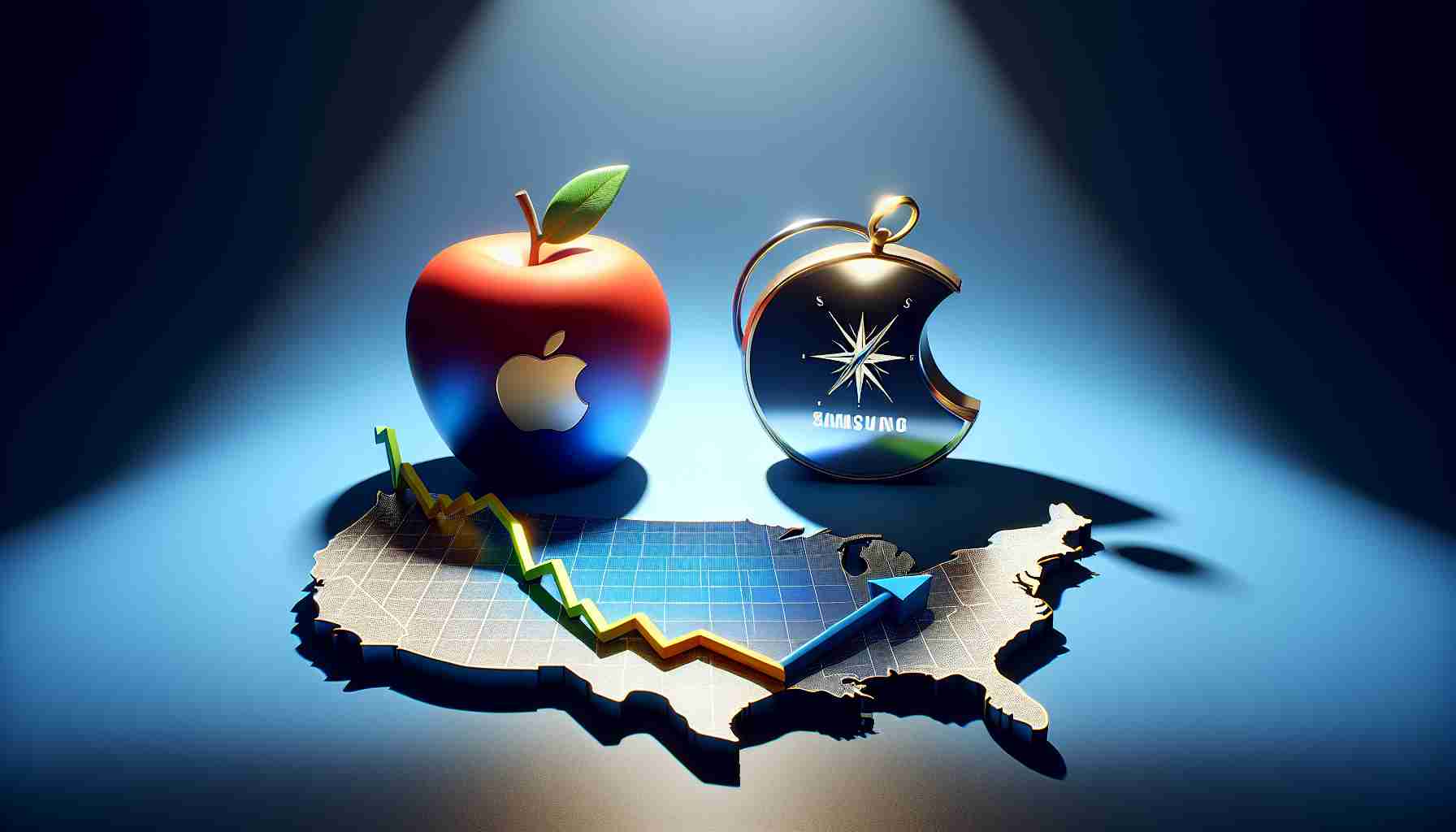The US smartphone sector has recently witnessed Apple’s grip on the market remains firm, with the company boasting a 52% share of the market, despite a general 8% drop in phone shipments nationwide. This bears testament to the steady six-quarter downward trend in smartphone sales, which was not spared by the 2022 holiday season, primarily due to persistent supply chain disturbances from earlier pandemic effects.
Simultaneously, Samsung has demonstrated remarkable resilience, with its market valuation surging to 31% after launching its S24 Galaxy lineup. This surge signifies Samsung’s strongest opening quarter in the past four years, standing in stark contrast to the downtrend seen in the less expensive Android market segment, which is currently experiencing a dip in consumer interest.
At the heart of this phenomena is brand loyalty, which has emerged as a pivotal factor in the technologically competitive landscape. Smaller brands struggle to keep afloat amidst the contracting market, whereas powerhouse names like Apple and Samsung continue to woo consumers with their expansive and integrated ecosystems, coupled with the introduction of sought-after products such as the iPhone 14 series.
Engaging in the constantly evolving smartphone marketplace involves navigating through numerous challenges but also presents potential openings. Aspects such as adapting to post-pandemic supply chain after-effects, adhering to environmental calls for sustainability, and integration of advanced technologies like 5G are reshaping the desires and expectations of users.
For those keen on delving deeper into smartphone industry analytics and forecasts, resources such as Counterpoint Research, IDC, and Gartner offer elaborate information and interpretations of market tendencies.
Brand strength and expansive ecosystems play crucial roles in maintaining dominance, with Apple leading through its iOS ecosystem and services such as iCloud, Apple Music, and the App Store – creating a seamless environment for its user base. Samsung, on the other hand, offers a wide range of products from budget to premium, catering to various segments while promoting its Galaxy ecosystem.
Key Questions:
1. What are the factors contributing to the declining US smartphone market?
2. How have Apple and Samsung managed to maintain their market share?
3. What challenges are Apple and Samsung facing in a declining market?
4. What are the potential opportunities for Apple and Samsung in a tough economic climate?
Answers:
1. Factors contributing to the declining US smartphone market include market saturation, longer device replacement cycles, economic uncertainty, and persistent supply chain issues.
2. Apple and Samsung have maintained their market share by cultivating strong brand loyalty, offering integrated ecosystems, and continuously innovating with new product offerings.
3. Challenges faced by these companies in a declining market include finding growth opportunities, adapting to supply chain disruptions, and responding to environmental sustainability pressures.
4. Potential opportunities for Apple and Samsung lie in capturing new users in emerging markets, expanding service offerings, and leading the market in terms of technology innovations such as 5G, foldable devices, and AI integration.
Key Challenges/Controversies:
– The need to balance innovation with sustainability, as electronic waste becomes a growing concern.
– How to manage production and distribution in the post-pandemic supply chain landscape.
– Pricing pressure from consumers demanding more affordable devices during economic downturns.
Advantages:
– Strong market positions enable both Apple and Samsung to have better bargaining power with suppliers and more substantial marketing capabilities.
– They can leverage R&D investments to drive innovation and maintain premium branding.
– Integrated ecosystems lock in customers, providing a recurring revenue stream and reducing churn.
Disadvantages:
– Dependence on a few high-end products makes companies vulnerable to market saturation and shifts in consumer preferences.
– High R&D and marketing expenses required to maintain market dominance and innovation lead.
– Larger targets for regulatory scrutiny due to their significant market shares.
For those interested in further information on the broader context of the smartphone industry, visiting domains such as Counterpoint Research at Counterpoint Research, IDC at IDC, and Gartner at Gartner can provide additional insights and statistics.
